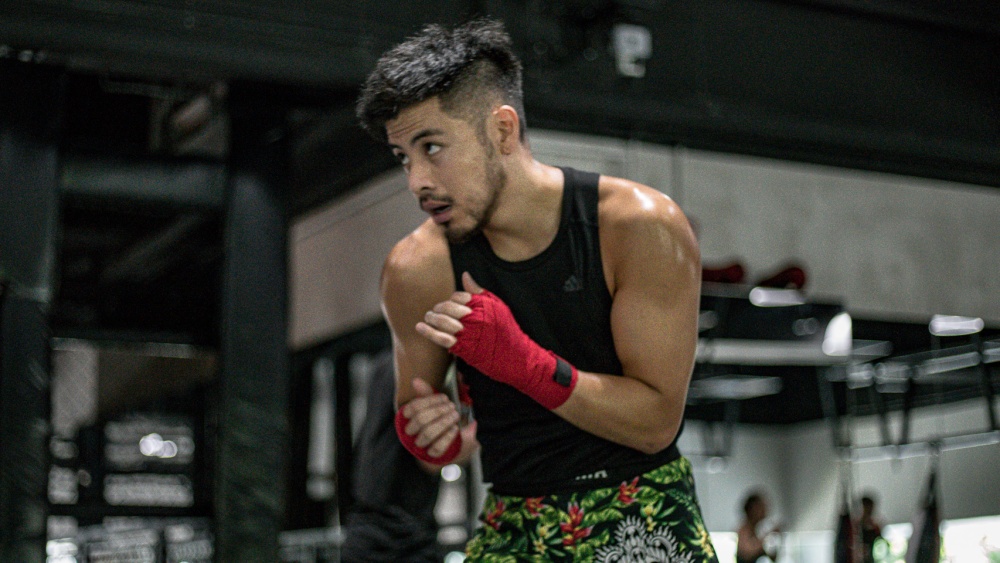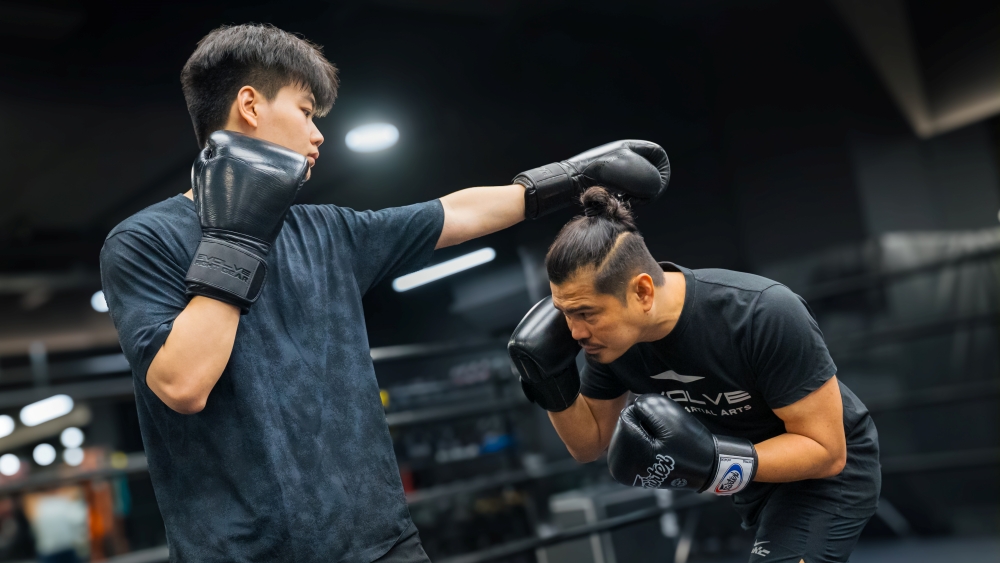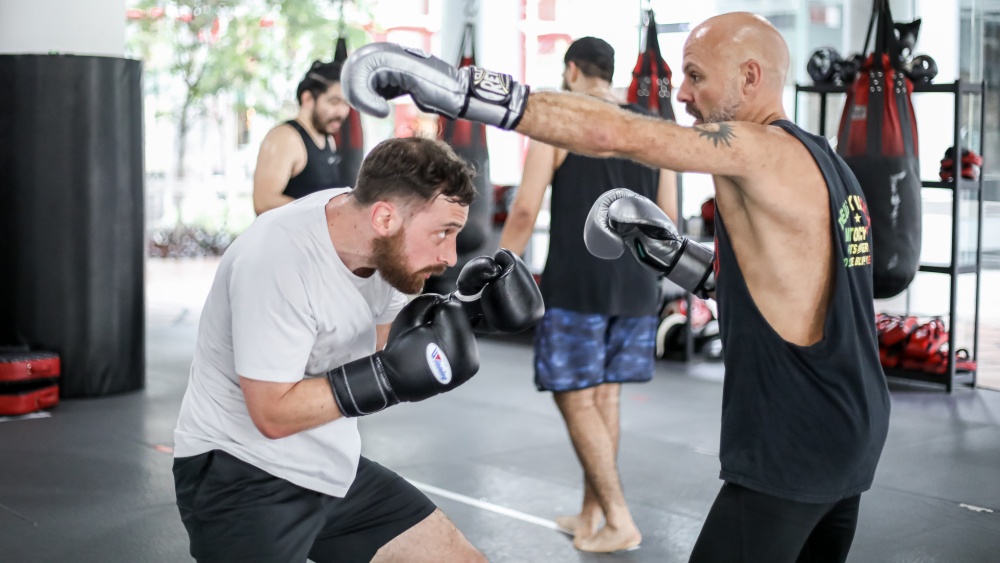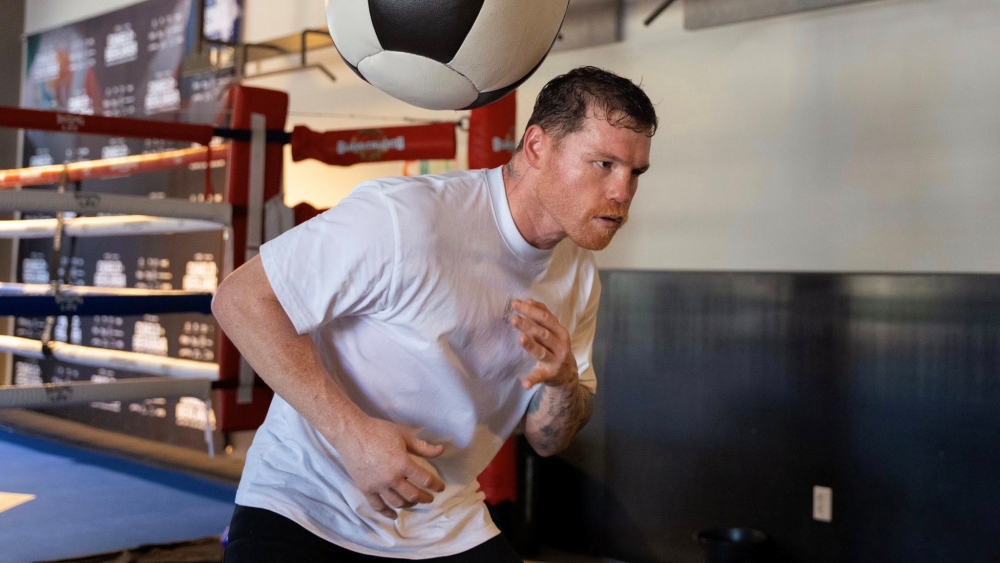To hit without being hit marks the pinnacle of boxing. Anyone can learn to throw a punch but avoiding one heading towards you is a completely different story. Despite the plethora of information on boxing mechanics and combinations for offense, boxing defense may indeed be even more important than the ability to punch itself.
Today, Evolve Daily shares 5 areas you should work on to develop an elusive boxing style.
1) Balance
Balance is important because skilled defensive boxers can shift their weight to their front foot should they decide to plant punches, especially power shots. Tommy “ The Hitman” Hearns is known for carrying most of his weight on his back foot until violently shifting and rotating his body to throw his feared chopping cross.
The basis for being elusive in boxing relies on your balance and how well you can shift and manipulate your weight. Many power punchers and brawlers favor a front foot-heavy stance, as this allows them to follow their punches through with their entire body weight. In contrast, defensive and slick boxers carry their weight more equally between both feet, slightly favoring a heavy rear foot. This allows for quicker movement and pivots off the centerline.
2) Footwork Patterns
Once you are comfortable shifting your weight and staying balanced, add a variety of footwork patterns to your boxing style to greatly increase your elusiveness. The Cuban boxing system places a heavy emphasis on footwork proficiency and variety compared to other styles, and their accolades reflect that. They dominate the amateur system and win most gold medals in boxing at the Olympic games. Many Cuban amateurs and coaches will attribute this success directly to their skillful footwork.
Elusive Footwork For Boxing
Another interesting element of the Cuban style that adds to its elusiveness is the high number of converted southpaw boxers. Unlike the majority of the world, there is a myriad of southpaws in the Cuban amateur boxing system, possibly outnumbering orthodox boxers!
https://www.youtube.com/watch?v=nqZxNj1JJMA
The pendulum step is a footwork technique that will allow you to conserve your energy while maintaining quick movement. It also helps you keep your rhythm during a match.
Lateral movement via side steps is another highly effective footwork maneuver to increase your elusiveness. Most boxers will train for proficiency moving forward and backward, but few can move laterally while chasing an opponent.
https://www.youtube.com/watch?v=4LnjWeATZ5s
Switching stances is frowned upon in many boxing gyms. However, many all-time boxing greats have used switching as a key instrument in their boxing arsenal. Marvin Hagler would shuffle forward with such momentum that he would often travel past his opponent after delivering a thudding jab. Instead of the traditional method of resetting to your stance, he would simply box his opponent from the orthodox stance that he ends up in.
Mike Tyson is another ferocious boxer that utilized switching. The peekaboo system that was taught to him by Cus D’amato utilized switching to outmaneuver opponents faster than they could adjust. Iron Mike even had a technique dubbed the D’amato shift in which he would switch to southpaw to deliver a guard splitting blow.
3) Counters
Elusiveness by itself serves no purpose without follow-up. Waiting too long after avoiding a punch or taking a dominant angle will allow your opponent to reset, putting you back at square one again. Instead, counter your opponent with your punches or move away and continue baiting them into overextending. You must train a variety of counters for this to be effective – if you only have one or two, they will catch on quickly and your entire game plan will be ineffective.
A classic and effective technique is the pull counter. Popularized by Floyd Mayweather, this involves you taking a small step back to avoid your opponent’s punch, followed by a quick spring forward to take advantage of your opponent missing their punch. Think of your back foot as a springboard that explodes right after you step back. Taking what Floyd Mayweather mentioned in the earlier segment of the video, ‘hit and not get hit because nobody joins boxing to get hit’.
Counter Strategies
The Russian/Cuban check hook lets you avoid a charging opponent much like a matador avoids a bull. As your opponent attacks, you sidestep and pivot off your back foot to take a dominant angle. This is different from the American check hook that pivots off the front foot.
For southpaws and switch hitters, the split entry counter is a technique you must learn. Manny Pacquiao used it to dominate his opponents during his legendary career. Step to the outside as your opponent jabs, this will move your head and line your rear hand up to “split” your opponent’s guard down the middle.
4) Utilize Feints
Feinting is making small movements to trick your opponent into thinking you are throwing a punch. This is useful for gauging their reaction and adjusting to your opponent. For example, when feinting, you get to notice whether your opponent’s hands are dropping every time, if they are, you could exploit that by feinting and immediately coming over his guard with a hard blow.
Feinting is a more advanced skill and has many nuances. You move your hand slightly to feint a punch, move your front foot to feint stepping in, or even look at your opponent’s body to trick them into lowering their guard from their chin. Even the best boxers, Manny Pacquiao and Floyd Mayweather utilize feints to study their opponent’s movements deliver finishing punches accordingly.
5) Staying Off The Centerline
The centerline is boxing in the zone between your arms where you and your opponents can damage each other. Taking time to step off to an angle can neutralize one or both of your hands, giving you a much better chance of landing and following up on your blow. This concept of the centerline is important because it varies depending on your opponent’s stance with yours. A closed stance leaves you both more vulnerable to each other’s lead hands, whereas an open stance is often a battle to land your rear hand. A good way to ingrain this habit is to always move your feet and head after you finish a combination.
Final Thoughts
In summary, being elusive in boxing takes time and practice, even boxing legends clock multiple hours on honing their craft before they can maneuver smoothly across the ring. So be patient with yourself, practice hard, stay safe and have fun!
If you enjoyed this article, you may also like:

















